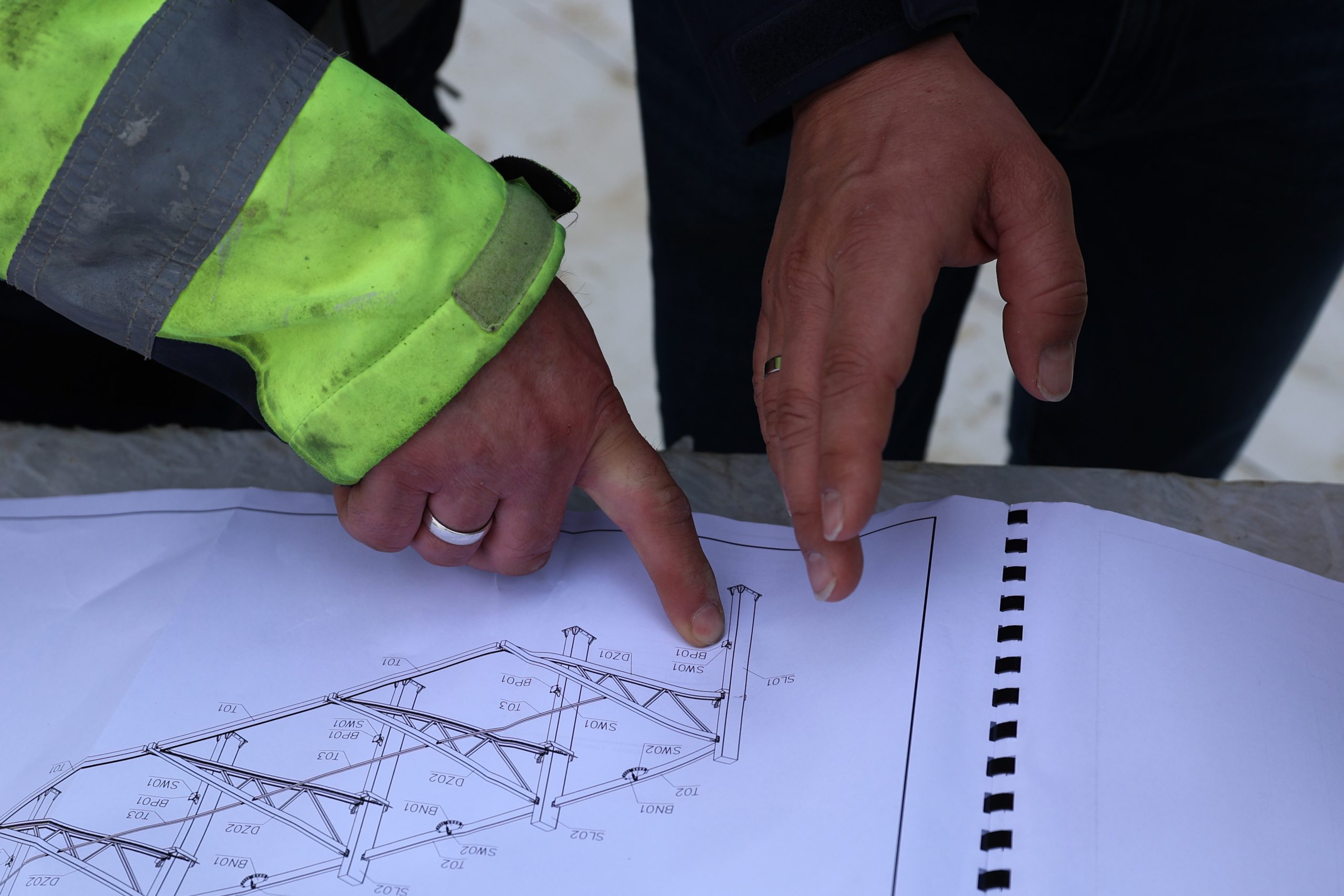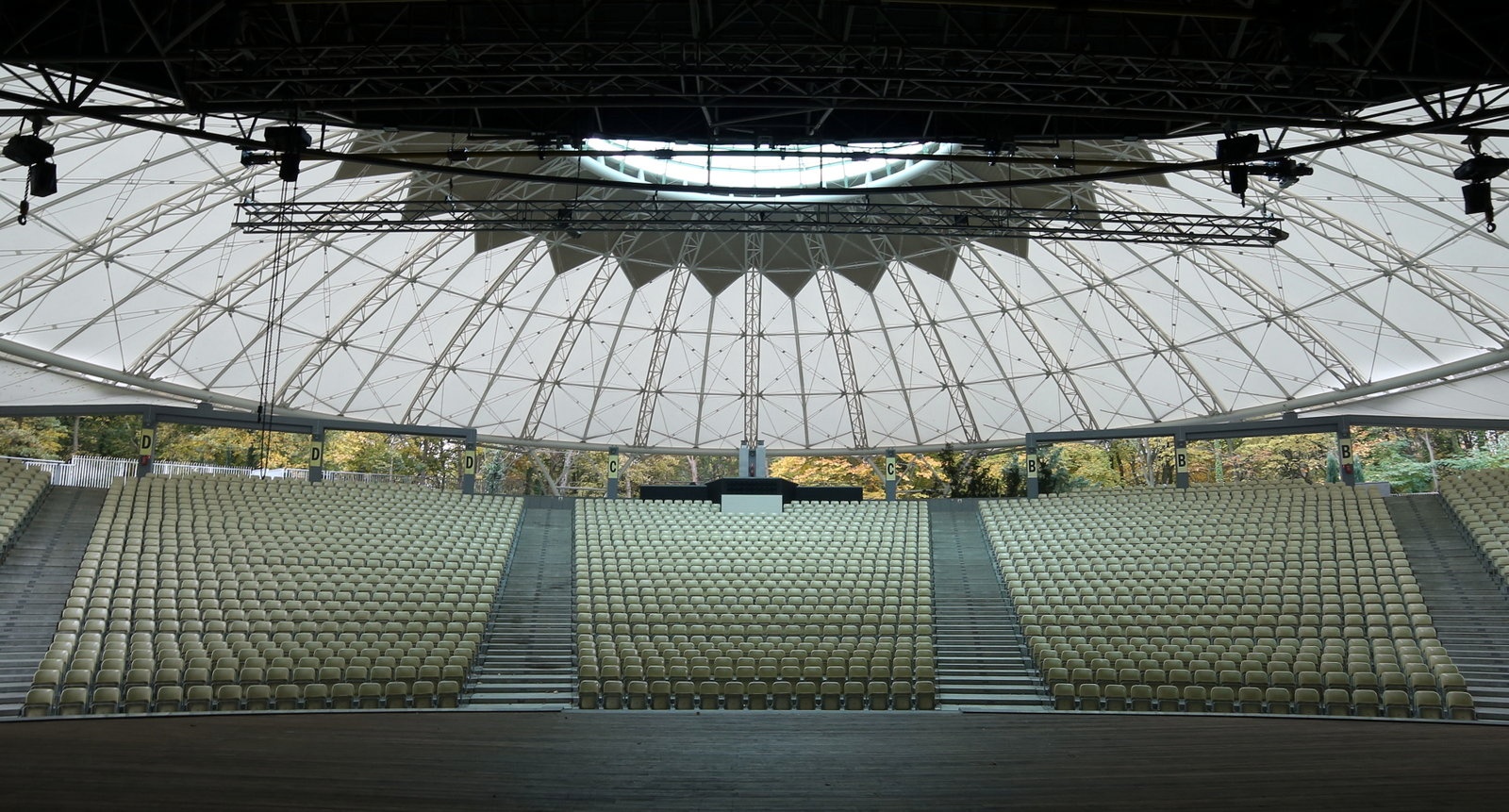
Fire Resistance of Membrane Structures (PVC, PTFE, ETFE)
You’ve probably noticed how membrane structures are increasingly making their way into the world of modern architecture. Their lightness, flexibility, and unique appearance make them a popular choice for designing stadium roofs, amphitheaters, and building facades. We use advanced materials like PVC, PTFE, and ETFE for this purpose. However, with their growing popularity, a crucial question arises: how do we ensure the fire safety of such structures? As specialists in this field, we want to share our knowledge with you so you can make informed and safe design decisions.
Get to Know Membrane Materials: PVC, PTFE, and ETFE in Terms of Fire
Choosing the right membrane is fundamental. It determines not only the appearance and durability of the structure but also has a direct impact on its behavior during a fire. Let’s look at the three most popular players on the market: PVC, PTFE, and ETFE. Each has unique characteristics that determine how it will react to contact with fire and high temperatures. At Abastran, we work with these materials daily, designing and executing membrane and ETFE structures, so we know their specifics well.
PVC membranes are a frequently chosen, economical solution. We value them for their good strength and ease of welding, which allows us to create tight joints. In terms of fire safety, PVC is classified as a flame-retardant material (usually class B-s1, d0). This means that it stops burning on its own after the source of ignition is removed. However, you must remember that at high temperatures, it can release toxic gases, which is a significant risk factor.
PTFE membranes, on the other hand, which are popular Teflon applied to a fiberglass mesh, are in a completely different league. They are extremely durable, resistant to sun and chemicals, and self-cleaning. Most importantly from a fire perspective, PTFE is a non-combustible material (class A2-s1, d0). It does not melt or form burning droplets, significantly increasing the level of safety. ETFE films, used primarily in the form of lightweight cushions, are striking due to their transparency. Like PVC, they are flame-retardant (class B-s1, d0). In fire, they melt, creating openings, which can help with smoke ventilation, but also carries the risk of hot material dripping.
Fire Resistance in Regulations: Standards and Classes You Need to Know
To assess how a given membrane structure will behave in a fire, we use European standards, which also apply in Poland. The key document here is the PN-EN 13501-2 standard. It specifies how we classify building elements in terms of fire resistance. This classification is expressed using letters and numbers, and the most important for you will be three letters: R (load-bearing capacity), E (integrity), and I (insulation).
- R (Load-bearing capacity): Indicates how long a structural element (e.g., a membrane roof on a steel frame) will maintain its shape and strength under load during a fire, without collapsing.
- E (Integrity): Defines the ability of a barrier to prevent fire and hot gases from passing through to the other, safe side.
- I (Insulation): Indicates how well an element protects against excessive temperature rise on the side not affected by the fire. The goal is to prevent the ignition of other materials or danger to people.
The time given next to these letters (e.g., RE 30, REI 60) indicates for how many minutes the given property is maintained during a standard fire test. Depending on whether you are designing a roof or a wall, the requirements for R, E, and I may vary. Detailed test methods for specific applications can be found in standards such as EN 1365-2 (for roofs) or EN 13381-1 (for fire protection). Remember that interpreting these markings and selecting the appropriate class is key to a safe design.
How to Read Fire Resistance Certificates?
A fire resistance certificate is an important document, but you need to know how to read it. They are issued by specialized laboratories, such as the Building Research Institute (ITB). You will find the exact fire resistance class (e.g., REI 60) in it, but pay attention to the details. This class applies to a specific, tested system: the type of membrane, insulation type, supporting structure, and installation method.
The most important rule: do not assume that a certificate obtained for one system automatically applies to another, even if the differences seem minor. A change in insulation thickness or membrane fastening method can completely alter its behavior in fire. Therefore, always ensure that your design solution is identical to the one described in the certificate. Also, check the validity date of the document, as standards and technologies change. If you have doubts about interpreting documentation or selecting the right system for your project, contact us – the Abastran team will be happy to share their knowledge.
Membrane Comparison – PVC vs PTFE vs ETFE
Which membrane is the safest in terms of fire? A direct comparison shows clear differences. The undisputed leader is the PTFE membrane on a fiberglass carrier. It is non-combustible (class A2-s1, d0), meaning it practically does not participate in a fire. It does not melt, drip, or support combustion. This is the best choice if passive safety is the top priority, for example, in public buildings with high traffic.
PVC membranes and ETFE films belong to flame-retardant materials (usually class B-s1, d0). This means they burn with difficulty, produce little smoke, and do not form burning droplets in standard tests. However, their behavior in fire is different from PTFE. PVC softens and melts, and worse, can release toxic hydrogen chloride. ETFE also melts, creating openings, which can help with smoke ventilation, but poses a risk of hot plastic dripping. When choosing between PVC and ETFE, you must consider the project specifics, potential effects (smoke, toxicity, dripping), and the fire resistance requirements of the entire barrier.
Membranes in Action: Examples and Practical Conclusions
How do membranes perform in real-life situations? Let’s look at a few examples. In large stadiums or concert halls, you often see roofs made of PTFE membrane. Why? Because it’s non-combustible. Even if a fire breaks out beneath it, the membrane itself will not become additional fuel. This is crucial for the safety of thousands of people during evacuation.
ETFE films on roofs or facades have an interesting property: they melt, creating openings. Designers sometimes use this as part of a smoke ventilation system, allowing smoke and hot air to escape. However, the risk of dripping molten plastic must be considered, and evacuation routes should be adequately protected. PVC membranes, although flame-retardant, can release toxic smoke in an intense fire. Therefore, in facilities with special safety requirements, their use may be limited or require additional safeguards. Each case is different and requires an individual risk analysis.
Let’s remember that the reaction to fire classification of the material itself is not everything – the key is the fire resistance of the entire building element (R/E/I), considering the cooperation of the membrane with the supporting structure and potential insulation. Investing in certified, proven solutions and cooperating with experienced designers and contractors specializing in membrane technologies is the best guarantee of creating a structure that is not only modern and functional but above all, safe for its users.
If you are facing a design challenge related to membrane, steel, or ETFE structures, we invite you to contact Abastran – together we will find the optimal and safe solution. Regular monitoring of the technical condition of the structure allows its properties to be maintained for many years.

Advertising Tents as an Investment – How to Increase Brand Recognition at Events?


Competition for Innovative Membrane Roofing – Results and Inspirations
This year, we had the pleasure of organizing a competition together with the Faculty of Architecture at the Silesian University of Technology for 6th-semester students to design innovative membrane roofing. The award ceremony, held at the Faculty of Architecture in Gliwice, was the culmination of the young designers’ creative and technical journey.








